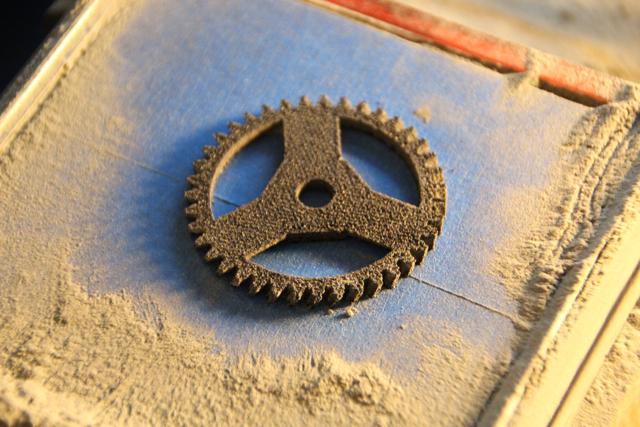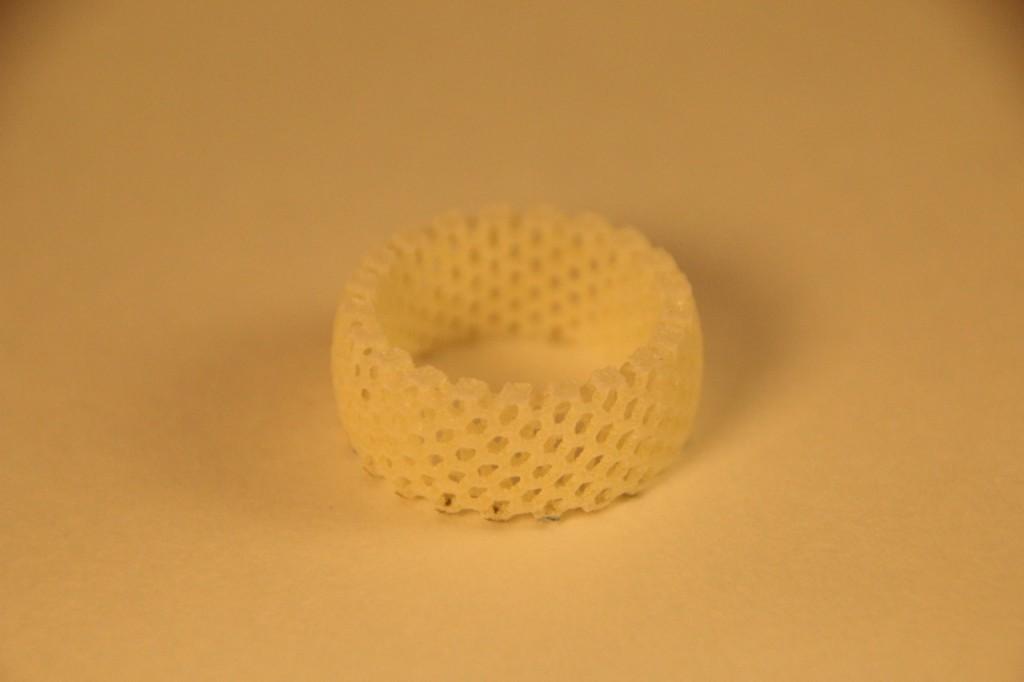You may recall, that a little over a month ago, we did a story on a man named Andreas Bastian, who had 3D printed mesostructured material. When I was covering the story and speaking with Bastian, he had also mentioned a couple other 3D printing related projects that he had been working on. One of those was the e-NABLE initiative – making prosthetic hands for people in need. The other was something that really intrigued me; the OpenSLS project.
When one thinks of Selective Laser Sintering (SLS) technology, they probably think of the large industrial level printers by 3D Systems, that cost in the $XXX,XXX range. These certainly are not 3D printers that an ordinary person would have in their home or garage. They aren’t even printers that the ordinary person has direct access to.
With that said, however, OpenSLS may be bringing the potential for such technology to more people, sooner rather than later. It is a project that has been in the works since late 2013, and has been exploring the SLS 3D printing technology and building a functioning prototype that is capable of printing objects in multiple materials. Almost all the work that Bastian did on OpenSLS was funded by Dr. Jordan Miller’s Lab for microphysiological systems engineering and advanced materials, at Rice University. He tells us that without the lab’s support support, none of this would have been possible.
“It’s open source hardware research that was sponsored by 3D printing companies, through the Advanced Manufacturing Research Institute (AMRI), a groundbreaking foundry for collaboration between members of the open source hardware community and academia,” Andreas Bastian tells 3DPrint.com. “AMRI was founded by Jordan Miller, a professor of bioengineering and long-time reprapper, who has taken on another group of extremely talented fellows this summer, to advance OpenSLS, develop low-cost 3D printed prosthetics in collaboration with e-NABLE and Shriners Hospital for Children, research 3D photolithography of living tissues, and develop techniques for inkjetting bacteria.”
Bastian informed us that OpenSLS is not intended to be a commercial product, but rather a “research platform for exploring the very sensitive multivariable space in which cohesive, stable sintering can be found”.
Those familiar with SLS technology, that is used by 3D Systems’ large SLS printers, know that there is a large amount of heat involved in the process. OpenSLS, however, uses a different type of technology. Bastian tells us, “Instead, it sidesteps the [thermal] contraction issue in exactly the same way that FDM and DMLS machines do: by sticking the first layer to a build surface to provide the necessary restraining forces to prevent layer-to-layer interference”.
While Bastian’s current machine does not utilize a heated build chamber, the design does support the ability to add one. This would allow for a wider variety of materials to be used in printing. Currently Bastian has successfully printed objects using a couple of different nylons and wax. He did this by sintering the first layer to blue tape, which anchors the material (similarly to FFF 3D printers).
So, what does building a machine like this cost? Bastian tells us that he spent less than $15,000 building his 3D printer. He expects that the next generation low-cost systems will end up costing a little more than that. However, he also said, “I think there is plenty of room for technological innovation in costing-down the BOM and components used in high-end commercial systems.”
Bastian also told us that he believes that a similar OpenSLS system could be hacked together for as little as $3,000-$4,000, “much in the same way RepRaps can be put together quite cheaply at the price of build quality.” However he doesn’t seem to have very high hopes on the technology really going mainstream anytime soon.
“I’m skeptical of a desktop SLS machines for a number of reasons,” said Bastian. “There are serious technical challenges to scaling the tech down; it’s not a very user-friendly process in its current implementation, and I don’t think this is a technology that average people would want to have in their homes. What we will see as the SLS space opens up, is a costing-down of the technology, just as we’ve sen with FDM/FFF and to some degree with SLA, but I don’t think that it will be as much of consumer driven process as we’ve seen with FDM/FFF. Light industry and small to medium-sized businesses I think will be the chief drivers for the low-cost (sub 50k) market. That being said, there’s probably enough interest in RepRap for an ultra low-cost SLS machine to succeed on Kickstarter. There has been a lot of talk about patents expiring, but it’s still a treacherous space, so I hope that commercial forays into the space do their research and tread carefully.”
The R2 powder handling module is not all that hard to create. It is composed of a laser-cut acrylic and several 3D printed parts, which Bastian says makes it accessible to any individual or hackerspace with a laser cutter. This type of technology is still very dangerous though, in that it utilizes very flammable and possibly explosive powders in the printing process. These powders can also be seriously hazardous to the respiratory systems of humans. More specifically Bastian outlined the following as safety concerns.
- SLS involves high power lasers, which have a host of their own safety considerations.
- Powder can be both a skin and lung irritant
- Powder can be flammable when aerosolize
- Decomposing nylon powder can release a host of toxic fumes, including carbon monoxide and hydrogen cyanide
While Bastian continues to work on the OpenSLS project, he is also working on a direct-metal laser sintering (DMLS) machine. It is still in its very early stages and far less developed than the openSLS printer.
“Managing the steel powder is a serious challenge though,” Bastian tells us. “Currently, I’m pushing for proof-of-concept rather than economical design for this machine. It’s got a lot of CNC’ed aluminum, which makes it less accessible I think.”
We will certainly keep track of the progress that Bastian makes on all of his 3D printing related projects, and will keep in touch with him as things progress. Let’s hear your thoughts on the OpenSLS project, and what you think this could mean for the future of 3D Printing, in the OpenSLS thread on 3DPB.com.
Check out the video of the OpenSLS printer printing a gear out in wax below.
Subscribe to Our Email Newsletter
Stay up-to-date on all the latest news from the 3D printing industry and receive information and offers from third party vendors.
Print Services
Upload your 3D Models and get them printed quickly and efficiently.
You May Also Like
Nikon SLM Solutions Sells SLM 500 to Primary Weapon Systems to Expand Suppressor Production
Primary Weapons Systems (PWS) is a Boise, Idaho-based manufacturer of suppressors, firearms, and related components. A subsidiary of Vigilant Gear and a sister company to aftermarket Glock slide manufacturer Lone...
3DPOD 261: Tooling and Cooling for AM with Jason Murphy, NXC MFG
Jason Murphy´s NXC MFG (Next Chapter Manufacturing) is not a generalist service; instead, the company specializes in making tooling. Using LPBF and binder jet, the company produces some of the...
HP and Firestorm Labs Form Partnership to Use Multi Jet Fusion 3D Printers in Deployable Factories
HP Inc., maker of a range of additive manufacturing (AM) solutions including the Multi Jet Fusion (MJF) ecosystem, has announced a partnership with Firestorm Labs, a developer of containerized, deployable...
3D Printing News Briefs, July 2, 2025: Copper Alloys, Defense Manufacturing, & More
We’re starting off with metals in today’s 3D Printing News Briefs, as Farsoon has unveiled a large-scale AM solution for copper alloys, and Meltio used its wire-laser metal solution to...





































